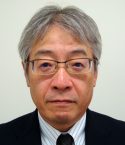Division of Diagnostic Pathology / Surgical Pathology
Overview of the department

Chairman
Clinical Prof.
Imamura Yoshiaki
Consultation system/conferences
In addition to 3 pathologists and 4 technologists belonging to the Division of Surgical Pathology, 5 pathologists and 2 technologists belonging to the Departments of Pathology are responsible for making hospital-/community-based pathological and cytological diagnoses. Standard staining (HE/Papanicolaou staining), as well as specific staining/immunostaining if necessary, are conducted to make objective, high-quality pathological/cytological diagnoses.
Conferences are actively held in cooperation with various departments of our hospital. In particular, we participate in endoscopy conferences with the Department of Gastroenterology and skin pathology conferences with the Department of Dermatology every week. In addition, pathological diagnosis conferences with the Departments of Pathology are held every week to improve skills to make pathological diagnoses.
Advanced devices
In May 2000, a telepathology system was introduced for remote intraoperative rapid pathological diagnosis (mean: approximately 30 to 40 cases per year). In April 2007, a virtual slide system was introduced. Based on requests for diagnosis, specimens prepared in other hospitals have been stored as digital images. Furthermore, case reviews presented in pathological diagnosis conferences have been digitally stored, and utilized for education programs such as pre- and post-graduate clinical training.
Liquid-based cytology (LBC) has been applied since the introduction of a PrepStain Slide Processor in April 2007. Since June 2011, it has been utilized for all gynecological cytological specimens. In April 2012, an automatic SNAP testing system (i-dency IS-5310) was introduced to determine whether or not molecule-targeting treatment is indicated. EGFR and K-ras gene mutation tests are available. Currently, the EGFR gene mutation test is conducted for approximately 10 lung cancer cases per month.
Primary examinations and explanations
Pathological and cytological diagnoses are primarily made based on our hospital specimens. However, it is also possible to pathologically/cytologically evaluate specimens prepared in other hospitals, using the above telepathology and virtual slide systems.
 University of Fukui Hospital
University of Fukui Hospital University of Fukui Hospital
University of Fukui Hospital +81-776-61-311
+81-776-61-311 Access
Access